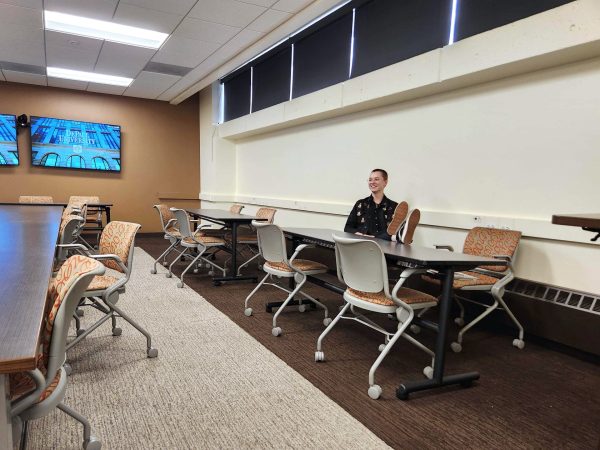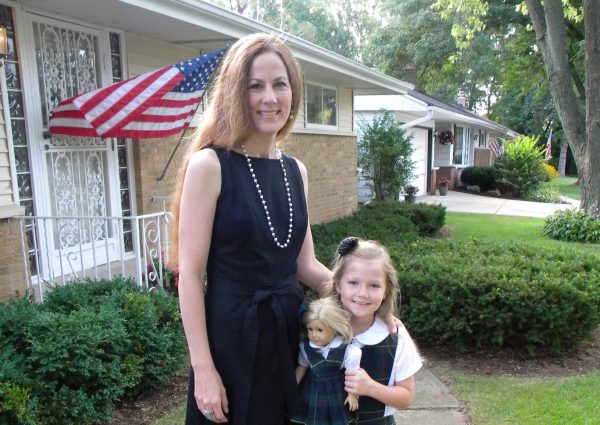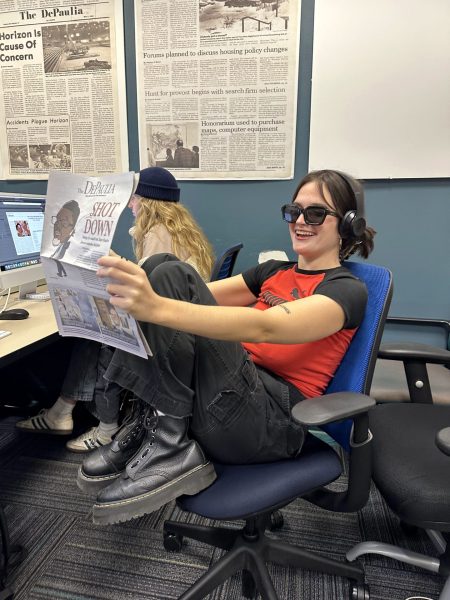OPINION: Despite its eclectic urban campus, DePaul is lacking in meaningful representation
Like many students who go to DePaul University, my commute to class every Monday and Wednesday involves a train ride and roughly, depending on speed, a 25 minute walk.
Although I take the same route, on the same day, at the same time, twice a week , every commute is different. That is because of the different people I pass by every time I make my way to the Richard M. and Maggie C. Daley Building.
From the different cultures to the variety of food to the many ethnicities, this is what makes Chicago a microcosm of the entire United States.
It’s unfortunate, though, that the same diversity which the city embodies is not represented at DePaul.
DePaul has been lauded for its diversity, being ranked 22nd in Diversity MBA Magazine’s 2018 Best Companies for Women and Diverse Managers and a Higher Education Excellence in Diversity Award in 2015 from Insight into Diversity Magazine. However, that doesn’t tell the full story.
According to DePaul’s University Marketing and Communication website, 22,437 students enrolled at DePaul this fall and only 8,750 are students of color, which happens to be the highest in the university’s history. Still, students of color only accounted for 39 percent of the students that enrolled this fall.
“When I first got here, I expected they [DePaul] advertise diversity and all that, but what I’m seeing here is that it really isn’t as diverse in my perspective,” said freshman Jonathan Noel. “I’m typically still one of the only black students in most of my classes.”
This lack of diversity that Noel is experiencing in the classroom has also been expressed by other black students in the past.
According to an Institutional Research and Market Analytics survey conducted by DePaul in 2016, among undergraduate White, Latino, Asian and Black students, it was Black students who were least satisfied with the race and ethnic diversity of the student body.
It isn’t just certain groups of students that feel DePaul lacks diversity but so do specific departments of the school.
Amber Settle, a professor in the School of Computing, has been a full-time faculty member at DePaul since 1996. Despite Settle having 23 years of experience at DePaul, she hasn’t seen much growth in the variety of students that are a part of the School of Computing.
“In the 80s is when things, particularly with gender, started to take a turn down,” Settle said. “That is when a lot of women seemed to leave computing. It actually has not rebounded, and it is a very persistent problem.”
With Asian and Caucasian males making up the majority of students at the School of Computing, Settle has grown accustomed over the years to being the only female in the room.
She does think, however, that it’s more difficulty being a newcomer at the school.
“I think what is more discouraging is for people who are new, for example, my students,” Settle said. “It is really difficult for a female student, or for an African-American student, or a Latino or Latina student sitting in my class and looks around and doesn’t see anyone else who looks like themselves. That would be much harder.”
This is just one specific example that reflects the disparities faced by minorities at DePaul. It’s also likely not the only group on campus that is struggling to see diversity among its students.
A way to reach a more diverse group of potential incoming freshmen during recruiting season would be to narrow the focus to high schools that have a large number of minority students. This would raise the likelihood of students of color from these specific high schools to apply at DePaul.
Additionally, DePaul should integrate more technology in the recruiting process. Whether that means using social media more effectively or creating virtual campus tours, both could increase the interest of future students of color.
There is still work that can be done to make everyone feel like they are welcomed at DePaul. So, until that happens, those that feel left out should take the same approach as Noel.
“It pushes me to do better,” Noel said. “I’m representing some of the black community because I’m the only person that is actually going through this.”







Gary / Sep 30, 2019 at 12:11 pm
Nicholas, well written article, but I don’t agree with your premise that “diversity which the city embodies is not represented at DePaul”. You say that “students of color only accounted for 39 percent of the students that enrolled this fall”. You think that 39% doesn’t represent diversity? Those numbers far exceed the 31% census-based national averages for black and Hispanic populations. Furthermore, white/Asian college enrollment rates are — nationally — several percentage points higher than black and Hispanic rates, making DePaul’s diversity record seem that much more laudable.
And regarding that 2016 survey where black students were least satisfied with the racial makeup — what were you expecting? Is it incorrect to expect that minority segments would typically be the least satisfied in a population?
I agree there are real difficulties facing minority students, but pointing the finger at DePaul seems misguided.